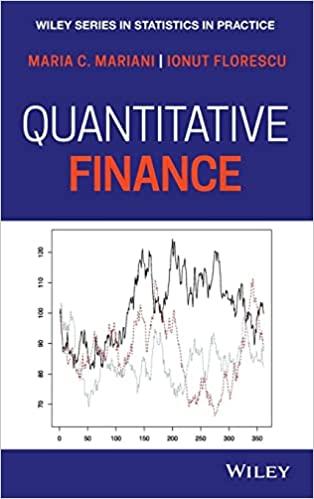If we have a model for the short rate (r(t)), show that (a) the zero coupon bond
Question:
If we have a model for the short rate \(r(t)\), show that
(a) the zero coupon bond price can be calculated as:
\[P(t, s)=\mathbf{E}_{t}\left[e^{\int_{t}^{s} r(u) d u}\right]=\mathbf{E}\left[e^{\int_{t}^{s} r(u) d u} \mid \mathcal{F}_{t}\right]\]
(b) the price of an option that pays \(C(T)\) at time \(T\) is:
\[C(t)=\mathbf{E}_{t}\left[e^{\int_{t}^{s} r(u) d u} C(T)\right]=\mathbf{E}\left[\int^{\int_{t}^{s} r(u) d u} C(T) \mid \mathcal{F}_{t}\right]\]
where \(r(t)\) is the interest rate of a loan emitted at \(t\) with immediate expiration \(t+\Delta t\) as perceived now at time zero.
Fantastic news! We've Found the answer you've been seeking!
Step by Step Answer:
Related Book For 

Quantitative Finance
ISBN: 9781118629956
1st Edition
Authors: Maria Cristina Mariani, Ionut Florescu
Question Posted:





